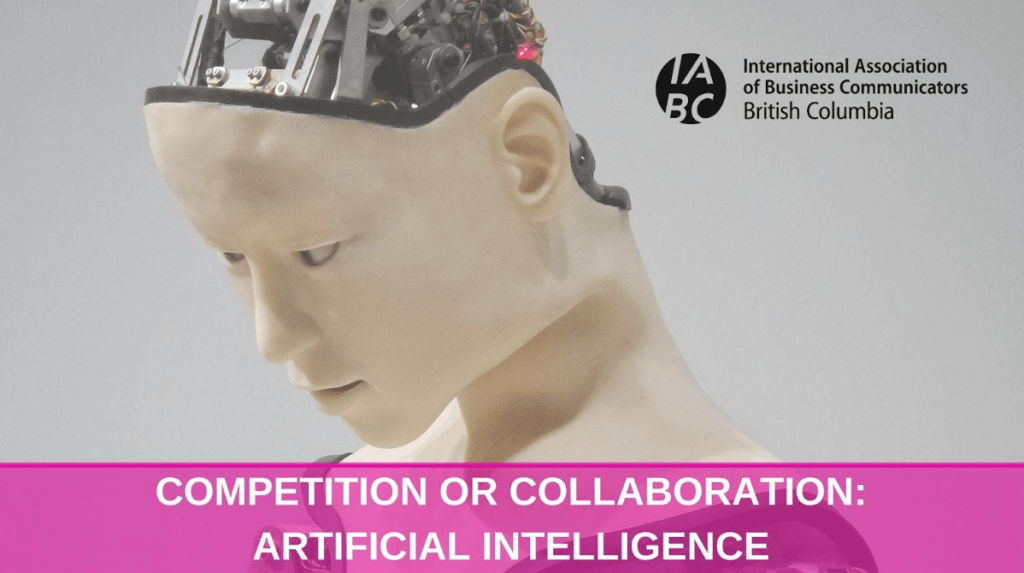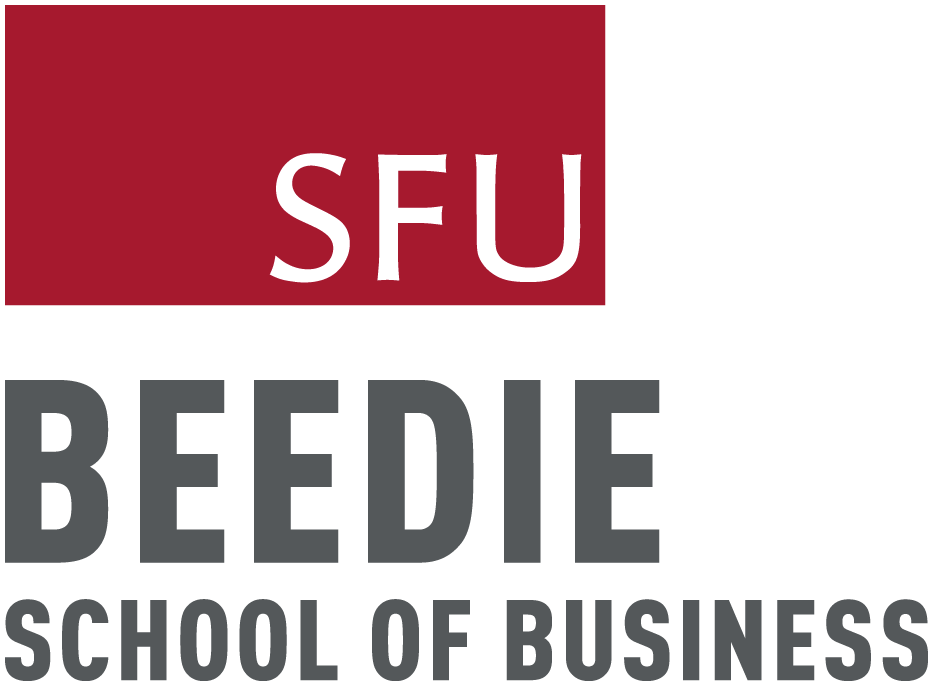Artificial Intelligence – there are few things that have been as polarizing as this. For the most part, speculators are divided into two main camps; the technology will either be harmful or helpful – think ChatGPT. One thing that is for certain is that the technology is rapidly evolving and is blurring the lines of sentience. And while the expansion of machine learning capabilities is inevitable, this will inescapably change the work of communicators – both how work is done and what daily work looks like. Will AI eventually replace the work of communications? How do you keep yourself primed and ready and what are the key things to watch for?
In a recent discussion on the “Top 5 AI Trends,” IABC/BC brought together academic experts and explored the key considerations for communicators as the transformation of artificial intelligence approaches humanoid. The accomplished scholars were:
- Dr. Terri Griffith: Professor & Keith Beedie Chair in Innovation & Entrepreneurship, SFU
- Dr. Mark Schmidt: Associate Professor, University of British Columbia
- Dr. Vered Shwartz: Assistant Professor, University of British Columbia
To narrow down the discussion, the panel focused on five current AI technology trends. The chapter’s very own Events Director and AI enthusiast, Laura Nastasa, rounded out the panel by moderating and guiding the speakers through a diverse range of perspectives and insights on various topics, ranging from natural language processing, generative AI in the workplace, to ethics, creative rights and accountability. Here is a summary of the discussion highlights:
Natural Language Processing (NLP): Dr. Shwartz eloquently summarized that natural language processing is any software built to interact with humans using natural language, such as English. If it was not already obvious, the technology is everywhere, but it is not perfect. For example, any time we use Google to search, or when Zoom transcriptions are enabled, that is NLP. However, the most pressing of these is the emergence and blitz-like popularity of ChatGPT, which can understand your question and spit something back out in plain English.
While the responses from AI tools (such as ChatGPT) may seem coherent and accurate, there can be some major mis-steps. Dr. Terri Griffith emphasizes that the need for human judgment still remains. There’s a component that these programs are missing, which limits them from understanding and processing the meta data surrounding the billions of data they’re processing. AI does not have the capacity to be accurately creative. There have been times where the technology “hallucinates” and produces information that is entirely fictitious without citation of sources.
Even though it may seem like a huge step, Dr. Mark Schmidt notes that these developments are merely a lone stepping stone in a very long pathway of stepping stones. Perhaps technology like ChatGPT can get us 80% of the way there, but the intricacies and nuances must still be left to the human mind.
Ethics and Privacy: Where there is the topic of data, the conversation is bound to evolve into discussions around ethics and privacy. And it did. Laura held no hesitations, dove right in and asked, what is ethical artificial intelligence? What does it look like? Our experts did not shy away. Dr. Griffith reminds us that these programs have to operate within a set of principles. In her case as a professor, she turns to her academic integrity policies along with her own professional judgment. Dr. Shwartz, on the other hand, drew a contrast: AI ethics is such a broad topic that the biggest corporations have very specific and dedicated teams exploring this topic alone.
When it comes to AI ethics, for the foreseeable future, humans will still play a significant role as studies have shown that artificial intelligence can perpetuate human biases. Dr. Griffith presents her approach, thinking in 5T, as a model to approach ethical AI. The five Ts stand for:
- Target: What is your goal?
- Times: Think of your socio- political- economical- context.
- Talent: What human resourcing do you have available and what is it capable of?
- Technology: The tools you have available and what capabilities it enables.
- Technique: What is the relationship between talent and technology?
The last “T” brought the discussion forward into the very next segment: crafting the work and expertise.
Work and Expertise: Some may think we are all doomed and that robots may eventually replace us. Others may think that pseudo-sentience will never get there. However, many of us can breathe a sigh of relief because world domination via AI is still in the distant future. At its current state, the technology is designed for very specific and narrow tasks. The code supporting a Google search function will not be the same code that will turn your Zoom audio into a live transcript.
Rather, it is not so much about the tool, but who is using it and how it’s being used. Cue: thinking in 5T. At the end of the day, technology will change our work and how we specialize – it will change our relationship to how we get the job done.
Fakes and Misinformation: During the session, Dr. Schmidt shared with us some AI-generated fake content of former American President Barack Obama. “It’s not just language we can do autocomplete on,” said Dr. Schmidt. “It’s images and videos. It then becomes a fundamental question of what sources of information we can trust when everything can be fake.”
If we are considering visual autocomplete, what about watermarks? Are they enough? Unfortunately, no. It just is not that simple – anyone can slap on a watermark. The real struggle with fakes and misinformation is when they do not want you to know that it is fake. That is where the real deciphering begins.
Who is Accountable? Human vs. Machine: To kick off the discussion, Laura brought in a quote from former Google CEO Eric Scmidt, where he said, “Augmented humanity is about computers helping us with tasks we are not very good at, and us helping computers with tasks they are not very good at.” Dr. Griffith jumped in and drew a connection to the “technique” in her 5T system with these questions: where does this emerging technology fit into our workflows? Where are we going to find the best fit for this technology?
Dr. Shwartz added that it would ultimately depend on the capabilities of the technology at the given time. AI is more adept at finding and perpetuating patterns (both good and bad) that humans may find too tedious. Similarly, people are relatively superior with reasoning and reading between the lines.
It became clear that as this technology advances, more and more questions arise. The majority of those questions are yet to reach any sense of a conclusion.
What we do know is that artificial intelligence is everywhere; it’s been helping us do things more easily, and there is an unquestionable budding relationship between machine and human. Dr. Shwartz summarized it best in noting that this technology is inevitably materializing, but in the least threatening way. It is the responsibility of the human race towards the machine – our creation – to educate each other on how it works and what its limitations should and can be.
IABC/BC is your professional association for all things communications. From volunteer opportunities, to discussions on very relevant topics, to finding your next career step, IABC/BC is there to provide for you. To learn more about our chapter and how we can support you, click here.













